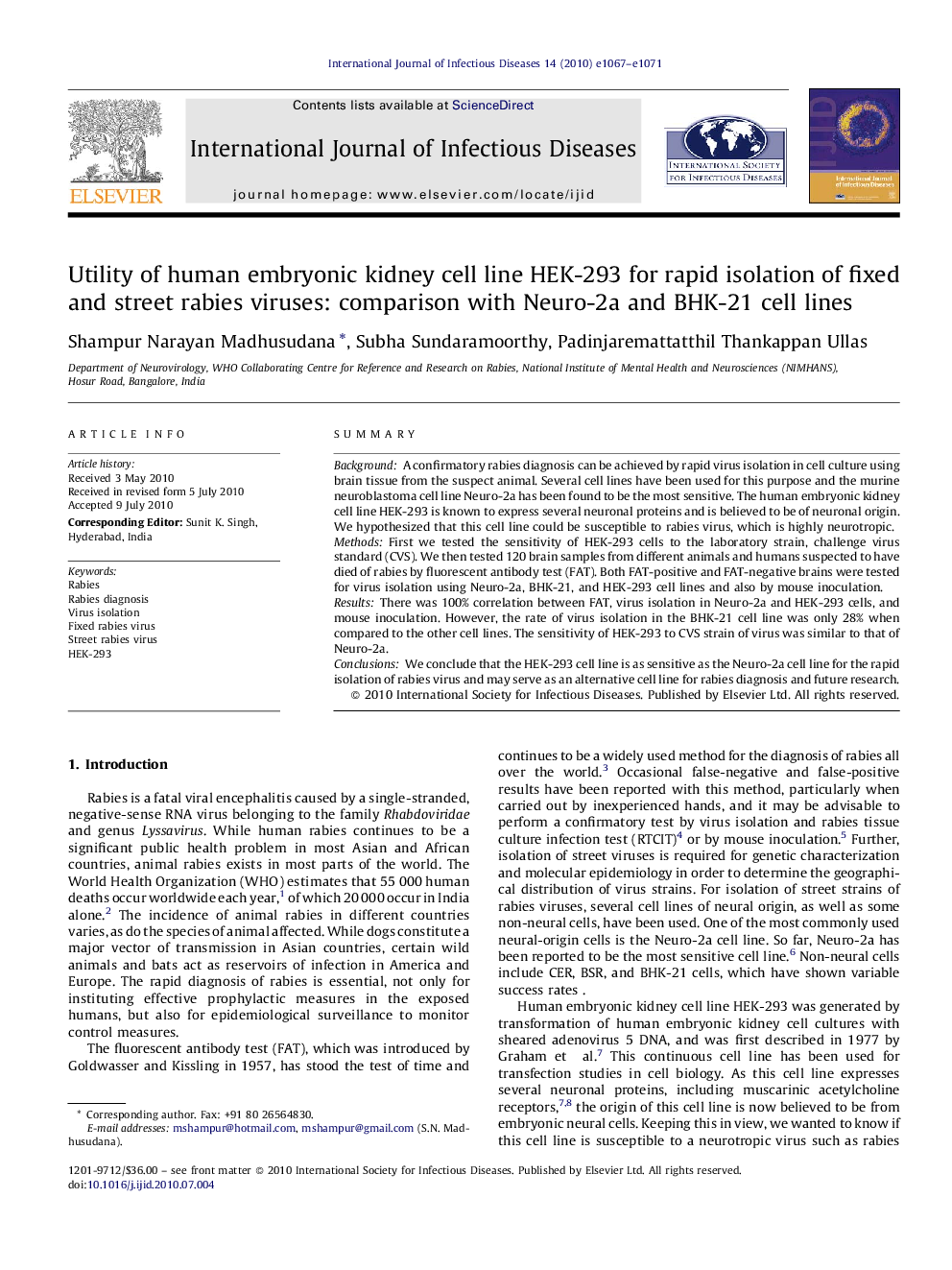| کد مقاله | کد نشریه | سال انتشار | مقاله انگلیسی | نسخه تمام متن |
|---|---|---|---|---|
| 3364191 | 1592117 | 2010 | 5 صفحه PDF | دانلود رایگان |

SummaryBackgroundA confirmatory rabies diagnosis can be achieved by rapid virus isolation in cell culture using brain tissue from the suspect animal. Several cell lines have been used for this purpose and the murine neuroblastoma cell line Neuro-2a has been found to be the most sensitive. The human embryonic kidney cell line HEK-293 is known to express several neuronal proteins and is believed to be of neuronal origin. We hypothesized that this cell line could be susceptible to rabies virus, which is highly neurotropic.MethodsFirst we tested the sensitivity of HEK-293 cells to the laboratory strain, challenge virus standard (CVS). We then tested 120 brain samples from different animals and humans suspected to have died of rabies by fluorescent antibody test (FAT). Both FAT-positive and FAT-negative brains were tested for virus isolation using Neuro-2a, BHK-21, and HEK-293 cell lines and also by mouse inoculation.ResultsThere was 100% correlation between FAT, virus isolation in Neuro-2a and HEK-293 cells, and mouse inoculation. However, the rate of virus isolation in the BHK-21 cell line was only 28% when compared to the other cell lines. The sensitivity of HEK-293 to CVS strain of virus was similar to that of Neuro-2a.ConclusionsWe conclude that the HEK-293 cell line is as sensitive as the Neuro-2a cell line for the rapid isolation of rabies virus and may serve as an alternative cell line for rabies diagnosis and future research.
Journal: International Journal of Infectious Diseases - Volume 14, Issue 12, December 2010, Pages e1067–e1071